It is believed, that when Parasurama threw his axe in an arc across the seas and created Kerala, he also cleaved the great Western Ghats with the same axe, dividing and sweeping them from left to right into two ranges – ‘Thenmala’ and ‘Vademala’. Geographically known as the Palakkad Gap, this place in the ancient legends has been referred to as ‘Vidharanabhoomi’ (the land that was split asunder).
Long, long ago, attracted by the serenity and breath-taking beauty of the hills and forests of these high ranges, Sage Kashyapa chose to meditate here, at the hill of Govindamala. Kashyapa was an ardent devotee of Vishnu, and as a result of his penance, the Lord is said to have appeared before him. Kashyapa’s desire was that Narayana would remain with him always, in the calm and idyllic surroundings of this land. Legend has it that the Lord chose to do so. The deity of Mahavishnu is said to have been consecrated by Sage Kashyapa himself.
Through association with Kashyapa this temple become known as ‘Kachamkurissi’ – as derived from ‘Kashyapan-Kurissi’ – ‘the Hill of Kashyapa’. At the steep and precipitous hillock of Govindamala, where Kashyapa did penance, a mountain spring magically bubbles up with force and vigour when pilgrims chant ‘Govinda! Govinda!’
It was to this place of worship that Dharma Varman, a prince, from what is now central Kerala, came in search of a cure for a debilitating ailment. It is said that the dying Dharma Varman after undergoing many days of ritual penance at this temple, returned to his kingdom, completely cured. In the legends of this region, Dharma Varman’s story has both the easy rhythm of a ballad, and the complex richness of tapestry. Woven in its warp is the intense and burning faith of a prince whose life could so easily have ended in tragedy. Entwined in its weft, is the compassionate and welcoming hand of Maha Vishnu Perumal of Thiru-Kachamkurissi.
This then, is the true miracle of Thiru-Kachamkurissi – a regenerative power that those who come in faith profess to feel on submitting to this all-forgiving deity, the turbulence of their minds. More often than not, they have returned, renewed and revived, their burning sorrows inexplicably assuaged by some strange balm, cool and comforting as a moonbeam.
About the Kachankurichi Temple
This is a temple situated in Kollengode, a small town near Palakkad town of Kerala. Though this is considered as a temple of Lord Shiva, more importance is given to Lord Vishnu’s temple within the temple complex.
The Vishnu deity is made of Jackfruit tree wood and is about 6 feet tall and faces the east. He is sitting on Anantha (Snake) and holds in his hand Conch, wheel, and mace and lotus flower. On both his side are his consorts, Bhoodevi and Sridevi. Since it is difficult to see his consorts, mirrors are kept on both sides so that the devotee can see all the three statues together. But in spite of this the God is worshipped as Rama.
It is believed that these idols were consecrated by Sage Kasyapa. This temple has been named after this sage as “Kasaypam kurichi”, which over decades has become Kachankurichi. Very near the temple are two sacred rivers Ikshu and Gayathri. There is also a mountain near by called the Govinda Mountain. People believe there is a cave in the mountain called Sitharakundam. In this cave it is believed that Lord Rama and Sita stayed for some time. There is a stone there by the side of a stream nearby, which is yellow. People believe that Sita used to apply turmeric from this stone.. Since this temple was also known as Venkata desam and the God here is also referred to as Venkatesan. Since the idol is made of wood, there is no regular Abishekam. The idol is anointed with oil once in a year. In these parts people who are not regular in their bathing habits are teasingly referred as Kachankurichi Perumal.
It seems Sage Kasyapa did an Aswamedha sacrifice here along with Sages Athri, Agasthya and Markandeya. The Yaga kunda (the pit where the sacrifice is done) is the present day Temple tank. It is called as Yagna theertham. The waters are considered as very sacred and supposed to remove all sins. The steps to this temple tank goes very deep. Very near the main (north side) temple tank, there is another small tank, which is referred to as “Kuthira Kulam. (Horse tank)”. It is believed that the sages tied the horse of Aswamedha sacrifice at this spot. In the southern side also there is a tank. It seems a king got leprosy due to his insulting Lord Shiva. According to the advice of Sage Agasthya, he got cured of this disease, by performing Abishekams to Lord Shiva using this water.
It seems during the invasion of Tippu sultan he wanted to plunder this temple. But once he was told about the immense power of this lord, instead he gave many properties to this temple.
It is interesting to note that , wherever a Yaga is performed in Kerala, The soma Latha, the Karungali wood and the deer’s skin which are to be used in the Yaga are brought first to this temple, kept before Perumal (Lord Vishnu) statue and pooja performed. Then only it becomes fit to be used in the Yaga.
Inside this temple there are temples for Ayyappa, Lord Shiva and Lord Naga Subrahamanya. Outside the temple is a Naga Prathishta. The arattu festival takes place in this temple in the month of Medam. The festival starts in the Hastha Nakshathram and the festival goes up to the Thiruonam star. All amavasya days are important to this temple, especially The Deepavali amavasya.
Thaipoosam also is a gala festival at this temple. On that day, devotees go to the Govinda Mountain, bring water from a stream there. (It seems there are marks of Conch and Vishnu Pada in the stream) and use the water to do Abhisheka to Lord Vishnu. During all Thiruonam days, Paal payasam is offered to the God.
The temple opens at 5 Am and remains opened till 11 Am. In between several types of worship including Seeveli and Pandheeradi Pooja are performed. It again opens at 5 pm and remains open till 8 pm.

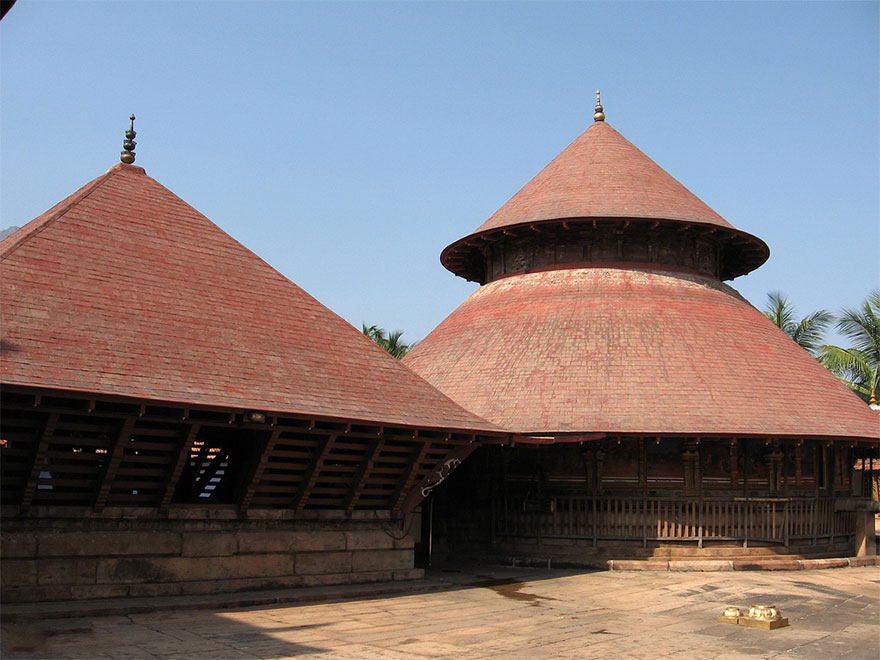

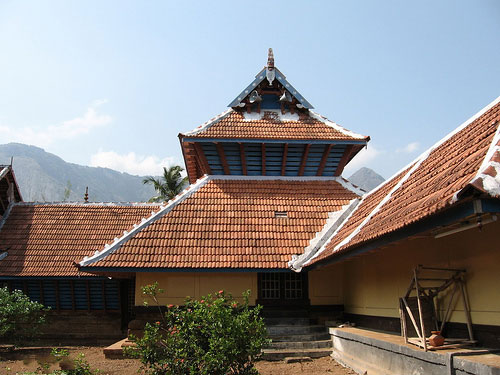
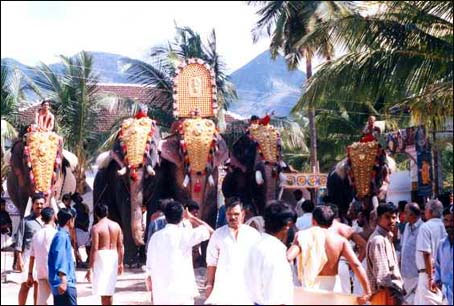
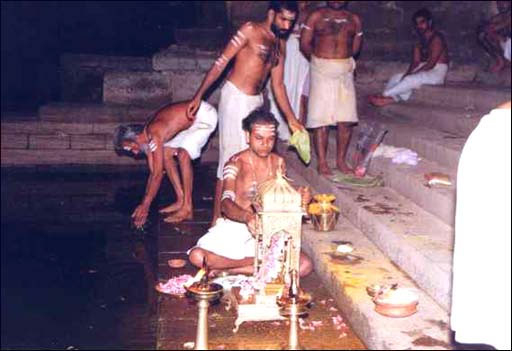
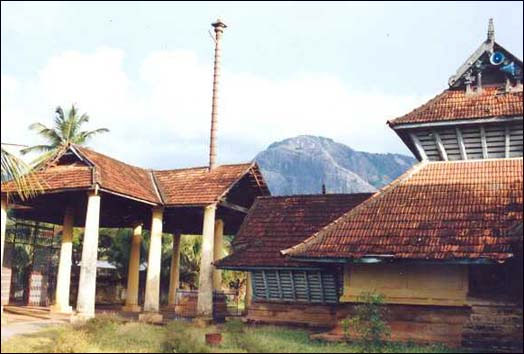

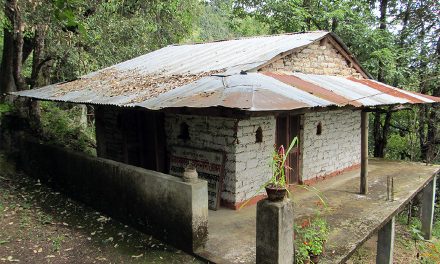
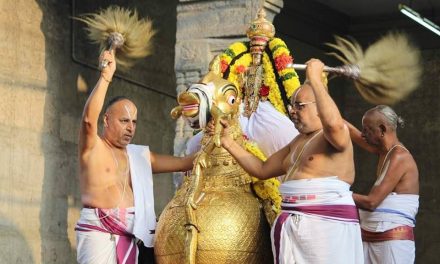
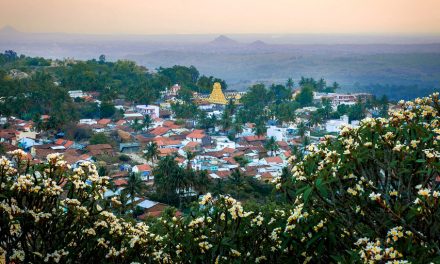










Highly informative articles. Well researched and scholarly. Valuable wirk being done in propagating the religion of India and specifically, South India. Keep up the good work.
Gr8 work from your team sir. It’s very great.
I will be proud to read every article by this site.
Keep going.
Thanks
Shivarajkumar.
Ours is a glorious land and owned by the very gods. Our education should include the information on the greatness of our ancestry. True ours is living land of God and it shall be so by efforts of persons like you. Vande mataram.
Very informative link .. .thank you
Good that you are keeping the ancient traditions alive through your articles.
Being a keralite your article on govindamala is highly appreciated and noted in my notebook on India. Stories can be useful to know the Hinduism and temples and their significance
Good info…better if a sketch given how to visit temple from known place. Like nearest rail link and station…..bus availability,,,,distance. Etc…phone number,,,postal address….email ID. Cell number,,,,
Very informative. If you could also include which is the main rail head or road point and how to reach the temple , it would be helpful. Thanks.
A divine resource centre which can heal our sins
I am awe struck that we have this beautiful temple and sacred land and history in Kerala. Being a Keralite, I have plans to visit the holy land and embrace and enjoy the pristine atmosphere.
An excellent treatise , thank you for your information.
Very Sacred and informative. I always have great pleasure in reading your articles. Your articles always bring something’s never heard of before. May the Lord Almighty continue to Bless you for the Best. Jai Shree Krishna!!!
Mr. Rao
Nearest Railway Station is Palakkad Station
You will get direct buses from Palakkad Bus-Station to Kollengode which is 20 km.
Nearest Airport is Coimbatore
You will get direct buses from Coimbatore’s Ukkadam Bus-Station to Kollengode which is 50 km.
The temple is walking distance from Kollengode Bus Station
My ancestral house is near the temple so I know.
Keep up this good work. The coming generation will surely thank you a lot. I do read this to my children whenever possible
All your articles are very informative. My ancestors came from the North side of India, but my country, small Island, has people from the different part of India. We intermingle and learn about their habits and deities. We do visit India yearly. Have been to ETTUNAMOOR, Lord Shiva’s temple. It is known as the healing temple. We all will be pleased to read about places which have healing powers. kINDLY DO A FEATURE ON THEM. THANKS A LOT AND KEEP ON THE GOOD WORK. Vijay
Very Nice and interesting reading. Would certainly like to visit the place and seek the blessings.
If any one who lives in the locality could provide some additional information regarding accommodation, transportation facilities. It would be also useful if contact details of the temple administration is made available. Regards to the team.
Dear Sir,
Still I am not seen this Temple, I want to see at the earliest.
Thank u for this post. It is very informative & useful to know about this site of pilgrimage.
If a sketch is given how to visit temple from a known place/town with more informations i.e. Like nearest rail link and station…..bus availability……distance …phone number…..postal address….email ID. Cell number….. etc, it will be more helpful. Remember, India is not a small country.
Such informative articles on the origin of Kerala and its temples bring lot of deep knowledge to those keen in seeking useful visits at the fag end of their life to bring peace as well.Before making long journeys to distant places , one is able able to find what they seek in their neighborhood itself.
Our glorious land owned by Gods, should be included as part of our education system to preserve and pass on to our followers and make them proud on the greatness of our ancestry. Vande mataram
Before leaving for distant temples in other states one can find a treasure of temples in Kerala itself.The information given is useful to people in search of happiness through peace.
Kachan kuruchhi temple’s description is quite informative. Somalatha for the yagas is found in the adjacent forests and any stories associated with it.
Very useful and we are able to get the glimpses of Lord Vishnu also.I will suggest this Web to my other fellow devotees.They will also enjoy this.
Dear sir,
Very, very informative and a wonderfully presented. If you could kindly provide the location, access, nearest town, lodges, eateries….etc….it would be additional help for those planning to visit the temple after reading ….
I really appreciate about this information.I hope you will provide such small temples in Kerala. You may also give some landmark to reach these temples.
In SREE RAMA THEERHAM TEMPLE AT THENARI , PALAKKAD , also , the temple spring BUBBLES UP , When We Chant ‘ ” SREE RAM , SREE RAM or SREE RAMA JAYAM , SREE RAMA JAYAM ” .
The water sprout was Created by SREE RAMA himself and it was named as ” Shara Ganga Theertham ” . Visit the Temple and Feel the Divinity of LORD SREE RAM .
Temple Chairman : SREE A. GOPALAKRISHNAN : CELL NO : 09995308231.
DEAR SIR, I HAVE VIEWED YOUR PHOTOS WHICH YOU HAVE POSTED TO MY E-MAIL ID IT IS SO NICE AND I LIKE THIS. THANKING YOU IN ANTICIPATION. KINDLY SEND MORE AND MORE INFORMATIONS ABOU THIS.
Wonderful information. Though we heard about Kachamkurichi temple and the temple elephant, this is a great news. Thanks for the educative & informative message. This really helps to know more about Hinduism and the significance of various temples.
The article is lucid and rich with information. I congratulate
you for the for the good work you are doing.
Am really surprised to read this interesting and worth article.
During my three years official stay at Palakkad and a frequent
visitor to Kollemgode, twice a week, no reference about this famous and historical temple by the local people. However it is
my at most desire to visit Kachamkurichi temple. Let HE help me
I fully agree with the view expressed by Sri P C Rao as regards the approach-ability…..
“Good info…better if a sketch given how to visit temple from known place. Like nearest rail link and station…..bus availability,,,,distance. Etc…phone number,,,postal address….email ID. Cell number,,,,”
SUCH INFORMATION CAN BE GIVEN IN RESPECT OF ALL THE PLACES THAT YOU COVER IN THESE WONDERFUL ARTICLES..
Very informative , thank u
It is a wonderful article worth reading with interest by all Indians to know the rich heritage we have in our surrounding.
Kerala has many of this type of temples and places unknown to common man and the local people should keep telling about this to the visitors.
You have done a very good work deserving the grateful appreciation by every on who desires to know rich heritage of his mother-land.
MY WARM AND WHOLEHEARTED THANKS TO YOU SIR.
hBPV
I hail from Kottayam, Kerala, but the information provided here is something special, never known to me earlier. Thanks a lot. S.N.Narayanan
Indeed a good article on one of the OLDEST and powerful Temples of Kerala – GOD’S OWN COUNTRY
Eagerly await to see such articles on various Important and Powerful temples across our country!
Dear sir,
Kachamkurissi temple is between Kollengode and meenanchira dam, past pylore village–lies
in idyllic surroundings and picturesque view spots
vaidyanathan
DEAR EDITOR
WONDERFUL INFORMATION. IT IS THE PROOF OF
EXISTING OUR HINDU GODS AND SAGES.
I KOLLENCODE. I WILL TRY TO VISIT IF MY HEALTH PERMITS. I AND MYU WIFE WILL PRAY TO THE PRESIDING DIETY OF KANCHAN KURICHI LORD VISHNU,LORD SHIV,LORD AYYAPPA AND LORD MURIUGA
TO GIVE BOTH OF U GOOD HEALTH ENOUGH STERENGTH TO VISIT THE KANCHAN KURICHI AT THE EARLIEST.
Very Informative. I wish I could visit the temple soon. Thanks for your efforts to consolidate the information.
Excellent article. Very informative
All foregoing comments are very appropriate – the writer or an area resident please also post lodging, food and other facilities needed by devotees specially for those from outside of Kerala. Very well written- Dhanyavaadaah
Jaya Kashyapa! Jaya Govinda! Haribol!
very good information may the lord help to visit him
Namaskaram Sir,
Millions of thanks for such good article and giving the opportunity for knowing our culture and India.. i am very much privileged for such wonderful news letter…. it will be great kind if you can send us more and more article about great great yogi maharaj and Indians to know the rich heritage we have in our surrounding. I am really surprised to read this interesting and worth article….Your articles always bring something’s never heard of before. May the Lord Almighty continue to Bless you for the Best….I always share all your article with my family we all are happy and proud to be a indian…. god’s country thank you…..very much.
Very very informative.
Dear Sir,
Very useful Article for me since we r unable to understand about the VARIOUS TEMPLES IN OUR COUNTRY and its importance and fortunately THROU U this ambition now gained THANKS LOT SIR
EROTAN RAJAN EROD3
Great article!People visiting India can go to this place and get blessed .Kindly give traveling information if possible.Thank you .
You are doing a great service to the Sanathana Dharma. Even the native would not be able to know the details of any of the temple so clearly and you are taking so much paid to put authenticate information about the temples and rituals. Thank you very much for your service and added my name also in your mailing list. God bless your team and wish my ignorance will also be cleaned a little bit.
So refreshing to read such great and well researched Article in the morning. Being a Keralite, I am keen to know more about my State and its rich and diverse culture. I visit our Adimakkavu in Pallasena regularly. I was not aware of this place which is so near to Pallasena. I am going in August to Pallasena and will definitely make a visit to experience the temple and Lord.
Iam extremely thankful to you to bring one of the best article about Kachamkurissi. Iam indebted to this place and always wish to settle down somewhere near the temple.
To visit this temple (which is in my native place), kindly get down at Palakkad and head to Kollengode or Nemmara. From there ask for Payyalore Village which is just 2 kms from Kachamkurssi temple. My uncle, Dr. Santhosh used to be fit person earlier and he can give lot of other information. You may reach him at 09447922375.
Your team is doing a splendid work. Keep it up. Sincere thanks for showing us such beautiful and spritual places. Very informative. Just by reading and looking at pictures, I felt as if I am there physically.